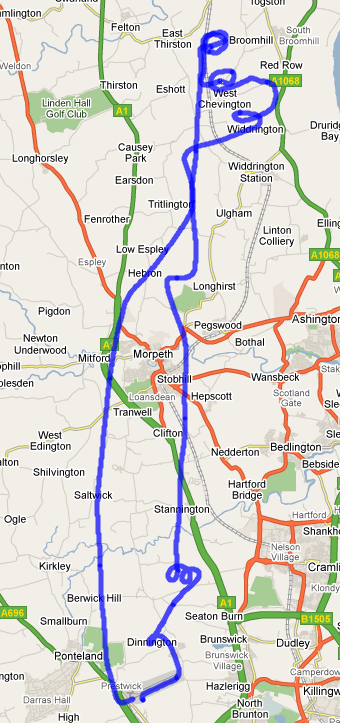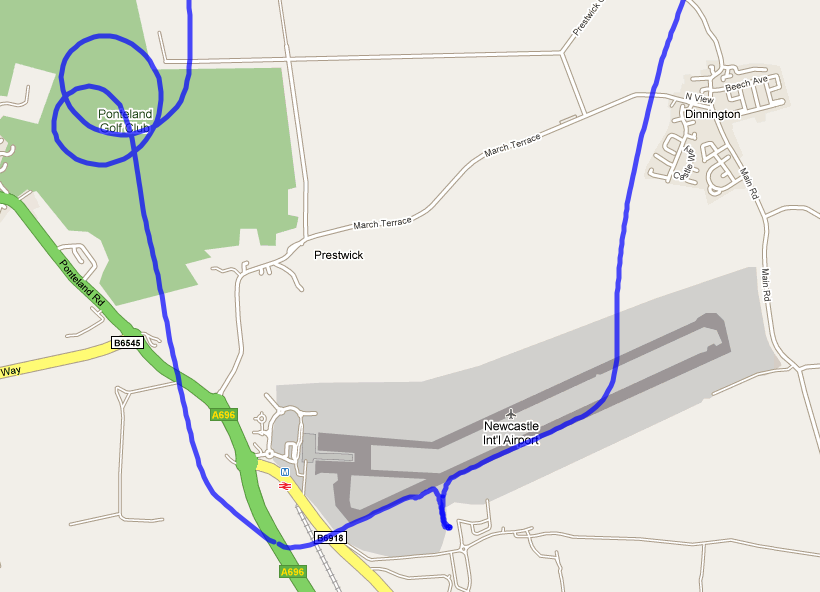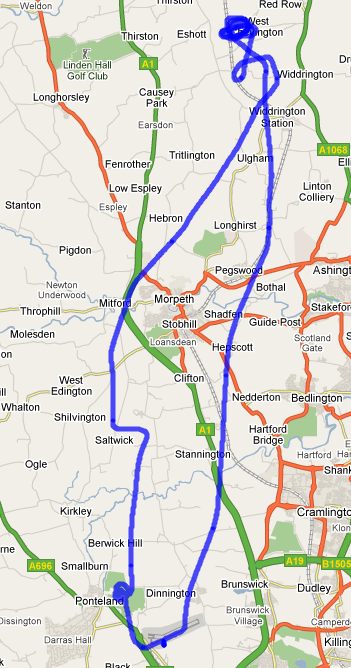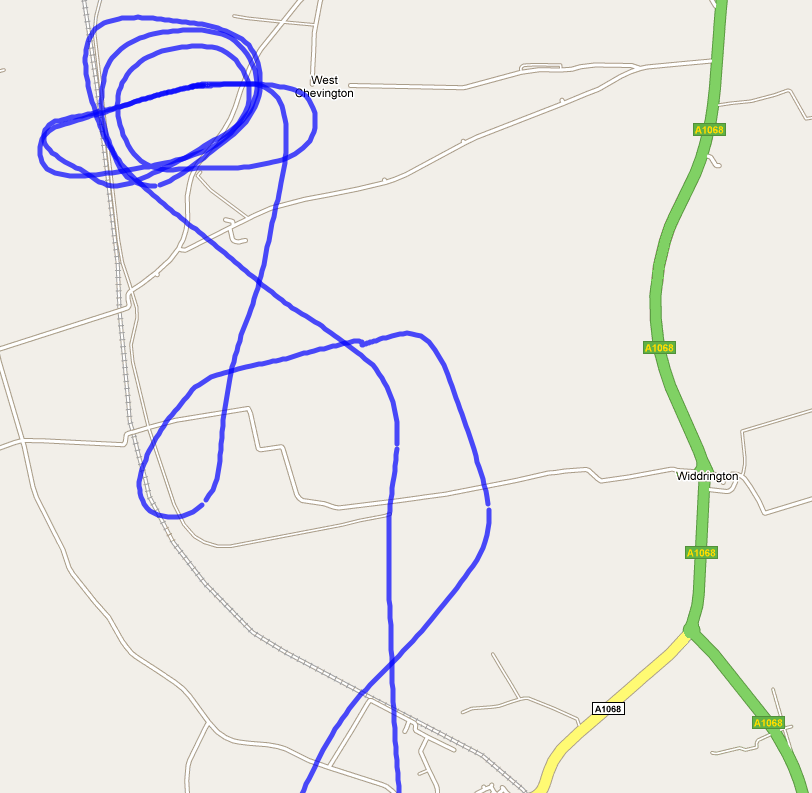Didn’t expect to be flying today, but I managed to get a lesson in.
The weather looked bad for lunchtime and afternoon, but Steve rang and said we could fit one in, in the morning. And we did ! Quite a challenging and fun lesson.
Order of the Day was :-
- some VOR work
- Autos to Powered Termination at 5 feet
- 180′ Autos
- Confined Area Practice
When I went out to check G-MAVI over, the windsock was limp. Surface Wind = Variable, less than 3 knots. Boy, would that change !!!!
The Lightspeed Zulu headset is really paying dividends these days. Today was a good example of it being worth the money. I heard everything that was said, not needing to ask Steve “what did they say ?” at any point.
So, 25 departure, right turn to Morpeth. The winds may have been calm on the surface, but it was like riding a bucking bronco at 1000 feet. I normally like to go upto 2300′, but the cloud prevented us going higher than about 1500′. At times we skirted the cloud, which is so much fun !!
With VORs, what you’re supposed to do is to TIT.
T une
I dentify
T rack
Once past Morpeth, Steve Tuned the VOR to St Abbs VOR, and we tried to listen to the morse code to Identify it was St Abbs and then we tracked some radial. This went fine. Conveniently, this led us to the plateau where we did a 180′ auto to a powered termination at 5 feet. By this time, the wind had really picked up. Over the plateau, it was showing as 20 to 30 knots, which makes for a much easier ending to an autorotation. It’s the first auto I’ve done which felt good – NOT perfect, but it felt good. We’d have been alive at the end of it, for sure, although Steve may have chipped one of his nails ![]() Would the helicopter have been ok, well, not too sure about that ?! 50/50 !
Would the helicopter have been ok, well, not too sure about that ?! 50/50 !
I felt I did the entering fine, the throttle fine, maintaining rotor rpm fine, hitting the spot fine, the flare went really well, AND the pop too. The only negative is once I’d done the final flare and POP (of the collective), I didn’t push the cyclic enough forward to get us level for the final (cushion to the ground). In hindsight, I think this is because I know we’re not going to land, so I’m doing it with a view to ending in a hover. But I need to do the steps as if we were going to do the final level and cushion that we would do if the engine quit for real. Will work on this next time.
With that done, we did a very entertaining 360′ turn. The wind doesn’t half make it hard !!! Steve spotted some fast jets in the distance. My mind was too much on the 360′ turn to see ANYTHING. We did another 360 and I could see them this time.
With them in sight, we headed off to do some confined area approaches. We did two, each to a different confined area. They went fine, although the surface wind was no quite turbulent, so it made for quite challenging moving around the confined areas once down.
With the confined areas complete, we headed back with a view to doing some more autos on the way back. Not one of the autos did I remember to do the fake Mayday call. It’s not that I forgot, more that I was concentrating on the actual flying of the autos. Will try and get the Maydays in next time.
These remaining autos were to a 500 feet recovery. We did two max range ones. That’s where we take rotor rpm to 90% (gulp) and maintain 75 knots. Slight change to the recovery in that Steve said to lower the collective, do a little flare to bring rotor rpm back up and then power away. Worked ok I think.
With all of that behind us, we side stepped back to the field and we rode the horse as it jostled us around the sky. It really was quite a ride. ![]() We were asked to do some orbits to allow Tower to get some flights away and 1 flight in. Here is a gps track of the whole flight and you can see the 2 orbits on the right hand side (just to the North west of Seaton Burn (bottom right). These were 2 turns in the air, but you can really see how the wind made them 2 turns in totally different spots. Shows the wind direction quite well.
We were asked to do some orbits to allow Tower to get some flights away and 1 flight in. Here is a gps track of the whole flight and you can see the 2 orbits on the right hand side (just to the North west of Seaton Burn (bottom right). These were 2 turns in the air, but you can really see how the wind made them 2 turns in totally different spots. Shows the wind direction quite well.

Once the last flight was in, we headed closer to the field and did another orbit waiting for a departure and then we were given our cue.
The windsock, that was previously limp, was now horizontal and the wind was nicely down the centre of the runway (very kind of it), so it took about a minute (or two) to fly from one end of the runway to the end !!
The taxi’ing back from the runway to the parking spot was a riot !!!! You’d think I’d been drinking (it should be on the video !). It was like the helicopter had a mind of its own. But, Steve let me take it all the way back in and the landing wasn’t bad considering. 7/10, better than some of the ones I’ve done with NO wind (and they’re easier).
Great lesson. Felt like a lot of stuff really came together.
There may be a chance on Thursday of a cheap lesson as we pick up a brand new helicopter (for the school) from somewhere near Stratford and bring it up. Fingers crossed for that. Be nice to see a different part of the UK (from the air).



